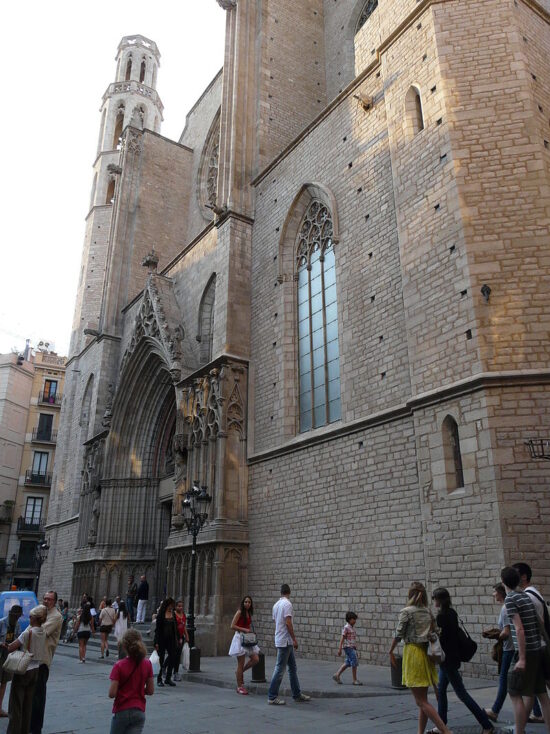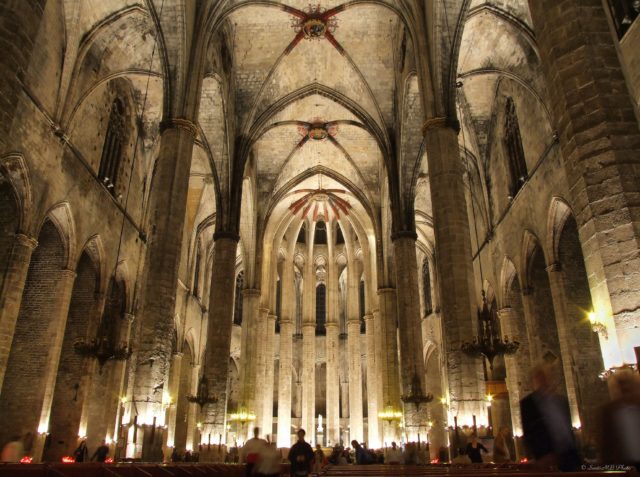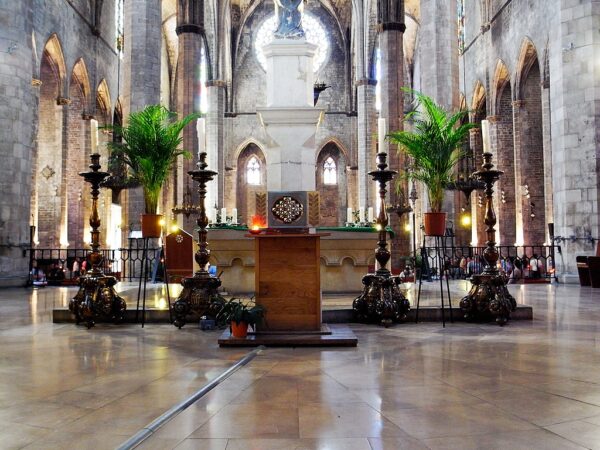Santa Maria del Mar
Eglesia de Santa Maria del Mar (St Mary of the Sea Church) is an architectural Masterpiece of late Medieval time that epitomizes the awe felt by a mortal man inside a construction of such colossal proportions. Santa Maria del Mar is the best example of Catalan-Gothic architecture constructed in a record time of 59 years after the founding stone was first laid in 1329 by the architect Berenguer de Montagut. The feeling of amazement one can get in a structure as imposing as this can only be matched by the immense respect one feels for the creators of this extraordinary Medieval accomplishment.



Construction of Santa Maria del Mar began in 1329, a time when the city of Barcelona became one of the main powers of the Mediterranean thanks to the maritime expansion of the Crown of Aragon. While the ecclesiastical and political center was located in the neighboring neighborhood of the Cathedral, in the neighborhood of the Ribera – so named for its proximity to the sea – a large part of the population linked to port activity was concentrated: from sailors and fishermen, passing through the merchants who had become rich thanks to maritime trade, to the most diverse guilds that we can still evoke today through the names of the streets around the temple.


Santa Maria del Mar was built in just 54 years, a record time considering that this type of building usually took more than 100 years to complete. The speed of its construction and the beauty of its Gothic architecture highlight the collective effort and determination that made it possible. King Pere III the Ceremonious and other prohoms of the neighborhood promoted the works by providing large donations, while guilds and workers such as carpenters, carpenters and glassmakers contributed with their labor to erect one of the symbols of Barcelona. More

